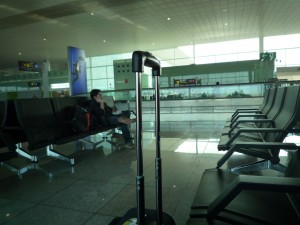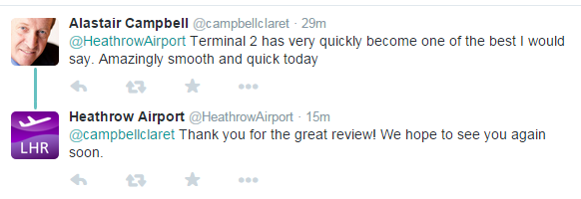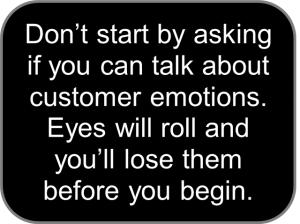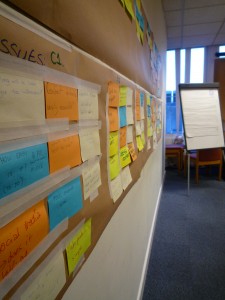British Gas and United: learnings from their customers with special needs

Understanding what happens when customers and companies meet
Companies who treat Special Needs customers with genuine empathy, supported by internal engagement and education, not only do the right thing but see benefits for all their other customer segments too. There are two contrasting stories here about how companies deal with the same type of customer in completely different ways; the differences being understanding and communication and clear answers to “Would you buy from us again?”.
There is no upper limit on how strongly I feel about how organisations should really understand their customers; and for personal reasons, even more so when those customer have special needs. Those people have conditions that may not necessarily be visible but are nonetheless extremely real for them and the people they are with. They see, and interact with, the world in different ways and a company that is genuinely customer-led will get it. Others will try to shoe-horn round pegs of customers into the square pegs of their processes and wonder why – or worse, not realise – they do more damage than good.
This is not just about it being the right thing to do. Companies can be so much more efficient and profitable with the right thinking and attitude. And for those companies saying it’s a customer segment too small or complex to worry about, neither the planning nor delivery is expensive but can be so rewarding in many other ways. Elite athletes and leadership gurus say that we need to exaggerate what we are trying to do and stretch our imagination if we want to get anywhere near our goals. If you want to fly above the clouds, shoot for the stars. The brilliant thing about people with special needs is that they can teach us so much about ourselves, put what we see as the norm into perspective and really challenge the way we do things. If we get it right for them, we get things right for most other people too. I wrote more about that in a blog on customer experiences for people with special needs last year.
I’m highlighting two very recent examples here to illustrate what an unintended (to give them the benefit of the doubt) lack of empathy looks like compared with one where they have it sorted.
United Airlines were once again in the headlines this week for less than good customer experiences. According to the headlines a pilot made an emergency landing and had police officers remove an autistic 15-year old girl and her family – because she had been displaying behavioural signs that most autistic people do. I’m not privvy to the facts and I have every admiration for pilots who get me home safely and are making life and death decisions day-in day-out. However, the airline knew about the girl’s condition, the family had let them know that before flying. Flying with an autism is a brave thing to do, for the family aswell as the child. That anxiety-filled experience would have started as soon as planning the trip began. People with such conditions rely on routine, on understanding what will happen step by step and can live moment-by-moment so if certainty and boundaries are absent, any emotion becomes amplified. Autism isn’t a rare condition and for me, the airline and crew should know that and be able to respond accordingly.
So being in a state of heightened anxiety, maybe just about getting through life emotionally and probably not having had a good night’s sleep for years, how must they have felt at being ‘responsible’ for diverting the aircraft and delaying others while trying to keep calm and the situation under control? How must they feel to have police officers escort them off the plane? How did the airline then help them cope with the unplanned visit to another destination when they are so dependent on routine, familiarity with the environment and certainty?
From a personal and a commercial customer experience perspective I would love to understand what happened and what the airline did. The airline itself says “The United brand vision is more than just words on paper. It is shaped by every aspect of our customer and co-worker experience“. Very true. The brand is what customers tell each other it is.
Other airlines know it’s an issue and deal with it well. Even Los Angeles International Airport now lets customers with special needs pick up a discrete sticker badge to wear, so that staff can be quicker to anticipate issues and help when it’s needed.
Continuing on that more positive note and with the other example, it was refreshing to see that a switch can be flicked to send a company into a different mode when they know they are dealing with someone with special needs. A British Gas engineer came to service my boiler at home. He was very polite and got on with the job quickly, leaving with a message to say all was well. I then left for a meeting and returned later that afternoon to discover that not only was there no hot water, there was no water coming out of the hot taps. That’s not a great scenario heading into tea-time and bath-time for the kids. I rang the helpline, who told me I could not have an engineer out until tomorrow at the earliest. Things were not looking great, feeling that I am now having to pay for their mistake. “Really? There’s nothing you can do? You’re leaving us with two kids and no hot water?”. “Sorry, I’ve checked again but no.” was the reply.
I’m lucky to live in a country where we take fresh and hot water for granted and there are bigger problems people face day-in day-out. But at that point in time I was concerned – my son has special needs that mean he needs a wash each day, something he can’t do by himself. And like the position the girl on the plane found herself in, without the routine and at the tired end of the day, things were now predictably going to be stressful and unpleasant. I mentioned it in passing to the lady on the helpline, thinking out loud and not to get any special favours but just because I wanted her to know the consequences of their actions. “Special needs?” she asked. That changed things immediately. She asked about the condition and then for what they call “vulnerable” customer, all the stops were pulled out. “It won’t be a problem, we’ll get it sorted tonight. Leave it with us”. Sure enough, an engineer rang back and was able to talk me through fixing the problem – the previous engineer had left a valve closed, which needed turning 90 degrees to open it. Simple. All sorted, over the phone.
I appreciate what British Gas did in the end and am grateful the evening remained calm. But I couldn’t help wondering why they keep that process tucked away for vulnerable customers when it’s what any type of customer needs if they are in a predicament, especially one created by the company in the first place. That will remain the prerogative of their commercial decision-making.
But in one of many sectors where differentiation is sought as much as it is a necessity, the companies that show their employees how to genuinely understand customers will be the ones who get more people coming back, spending more and telling others to do the same. By paying attention to those with special needs, the treatment of all customers will benefit. The companies that don’t will simply have all the wrong headlines and wonder why their customer base and profitability is shrinking.
If you’d like to know more about this subject or how I might be able to help with any other aspect of customer experience do please get in touch – I’m on +44 (0) 7917 718 072 or can be contacted by email at [email protected].
Thank you, I hope you found the post interesting and thought-provoking, and please feel free to add your own views below.
Jerry Angrave









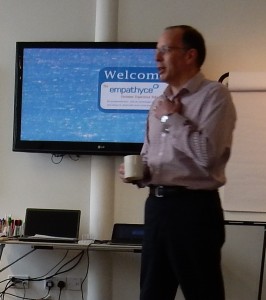 offer their insights on addressing others’ issues and get feedback on their own.
offer their insights on addressing others’ issues and get feedback on their own.
 possible, come back as often as possible and tell everyone they know to do the same. If it moves (that is either people or bags) they can barcoded, processed and measured. How many get from A to B in as little time or at least cost becomes the primary, sometimes, sole focus. All of which makes good operational sense, given the complexity and challenges of running an airport in a way that airlines will be confident is using.
possible, come back as often as possible and tell everyone they know to do the same. If it moves (that is either people or bags) they can barcoded, processed and measured. How many get from A to B in as little time or at least cost becomes the primary, sometimes, sole focus. All of which makes good operational sense, given the complexity and challenges of running an airport in a way that airlines will be confident is using.
